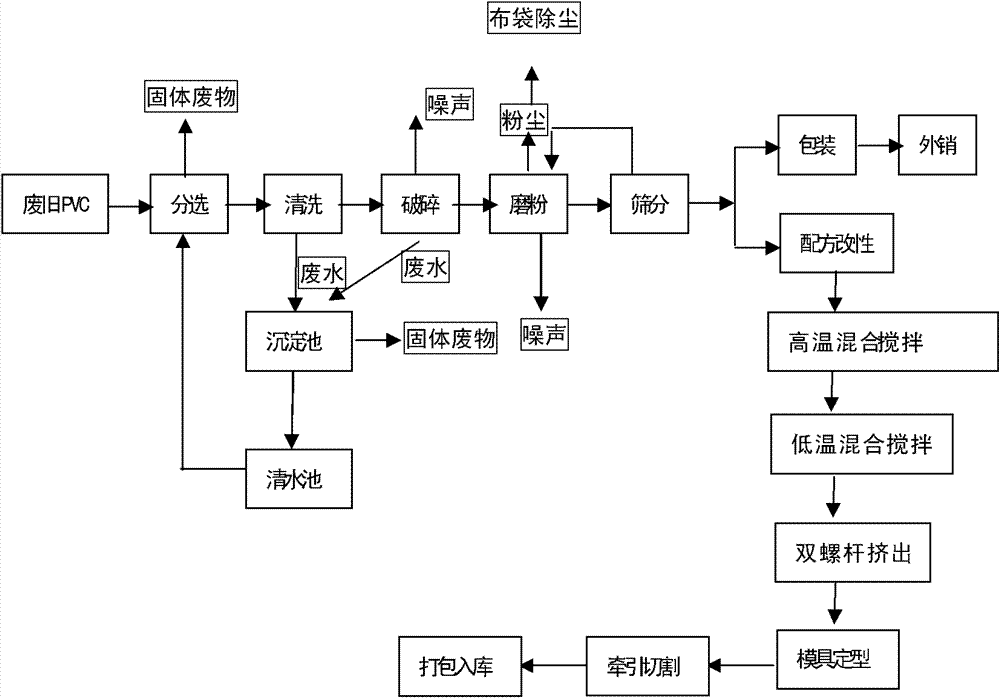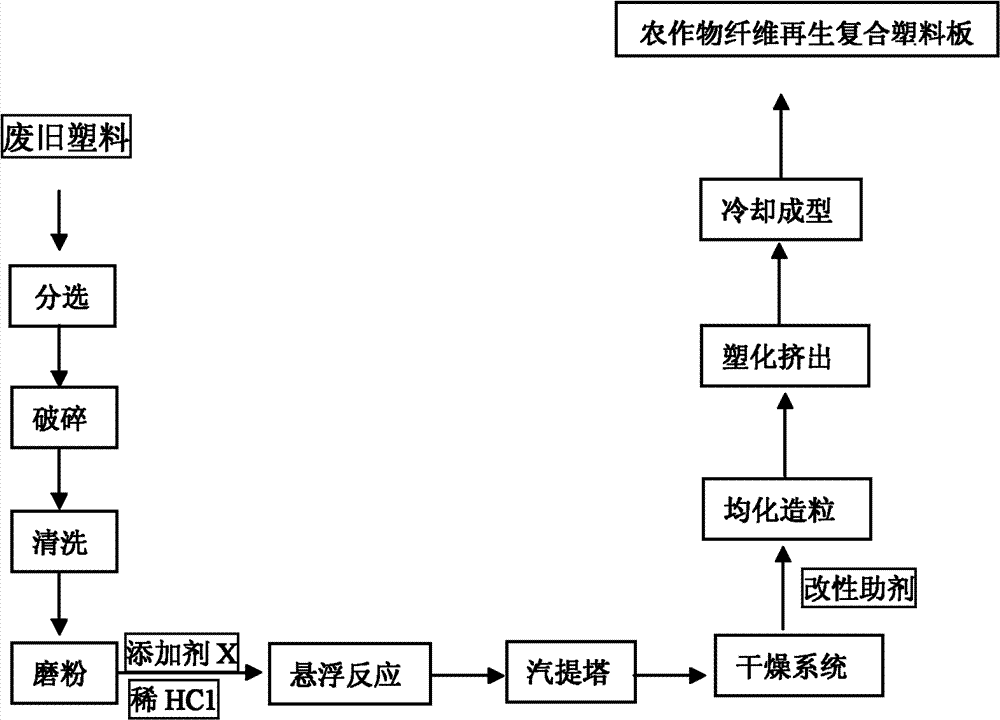Crops waste material regenerated composite plastic plate and its production process
A composite plastic sheet and production process technology, applied in the field of recycled composite plastic sheet and its production technology, can solve the problems of unsatisfactory finish and color uniformity of carbon fiber plastic sheet, poor fluidity of composite material, and high filling amount of carbon fiber. Wide source of raw materials, good thermal stability and low cost
- Summary
- Abstract
- Description
- Claims
- Application Information
AI Technical Summary
Problems solved by technology
Method used
Image
Examples
Embodiment 1
[0035]Embodiment 1: The technical solution of the present invention relates to a kind of crop waste recycled composite plastic board, and its composition comprises the raw material of following weight ratio: waste PVC powder 100 parts, crop waste scrap 20-30 parts, composite stabilizer 5-7 3-5 parts, processing aid ACR 3-5 parts, impact modifier CPE 5-8 parts, lubricant 0.8-1 part, filler 8-10 parts, colorant 0.1-0.2 parts, anti-ultraviolet agent 0.01-0.015 parts .
[0036] The composite stabilizer refers to the mixture of tri-salt, di-salt and metal soap in the reaction system with nascent grain size and various lubricants by using the symbiotic reaction technology, and the processing aid refers to the acrylic acid series Resin, impact modifier refers to chlorinated polyethylene, lubricant refers to paraffin and stearic acid, filler refers to CaCO 3 , the coloring agent refers to a pigment, and the anti-ultraviolet agent refers to 2-hydroxy-4-methoxybenzophenone.
Embodiment 2
[0037] Embodiment 2: The method of improving the color uniformity of the recycled composite plastic board from crop waste The operation steps of the invention are as follows:
[0038] (1) First sort, crush, clean and grind the waste PVC material and crop waste, and add bleaching powder and dilute hydrochloric acid to the grinding material to fade the color;
[0039] (2) Send the faded powder to a magnetic stirrer and add azodicarbonamide for pretreatment before modification;
[0040] (3) The pretreated powder is then passed through the "secondary stirring device", adding aluminate coupling agent and butyl acrylate coupling agent to carry out molecular modification of PVC;
[0041] (4) PVC powder particles enter the granulator through the discharge pipe, add colorants and processing aids, knead, homogenize, and granulate;
[0042] (5) After granulation, it is transported to the feeder in the molding workshop through the transmission channel, and enters the extruder from the ba...
Embodiment 3
[0044] Embodiment 3: The method of improving the surface finish of the crop waste recycled composite plastic board The operation steps of the invention are as follows:
[0045] Firstly, the waste PVC material and crop waste are sorted, crushed, cleaned, and pulverized, and then include:
[0046] (1) The milled powder is transported to the suspension reaction kettle through the belt, and azodicarbonamide, dilute hydrochloric acid, etc. are added to stir and react, and by adjusting the stirring intensity, the particle size and particle size distribution of PVC are controlled, and PVC molecules are formed on the surface of the particles. The coating film makes the PVC resin particles regular in shape and uniform in particle size;
[0047] (2) The PVC slurry directly enters the stripping tower through the discharge port of the reaction kettle. After the azodicarbonamide substance in the PVC particles is removed, it is sent to the drying tower for centrifugal dehydration through a ...
PUM
 Login to View More
Login to View More Abstract
Description
Claims
Application Information
 Login to View More
Login to View More - R&D
- Intellectual Property
- Life Sciences
- Materials
- Tech Scout
- Unparalleled Data Quality
- Higher Quality Content
- 60% Fewer Hallucinations
Browse by: Latest US Patents, China's latest patents, Technical Efficacy Thesaurus, Application Domain, Technology Topic, Popular Technical Reports.
© 2025 PatSnap. All rights reserved.Legal|Privacy policy|Modern Slavery Act Transparency Statement|Sitemap|About US| Contact US: help@patsnap.com



